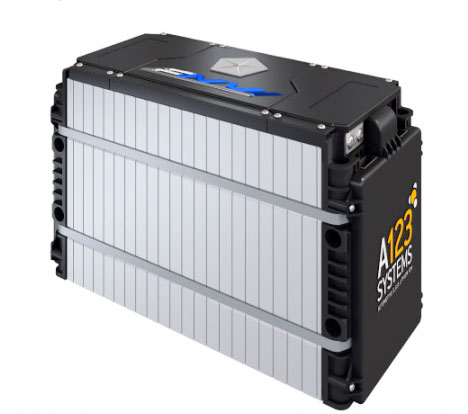Recently, there has been some blog chatter about my comments on the future of lithium ion batteries — my goal here is to clarify my stance.
I do believe that these batteries have been over-hyped in terms of technology available today. However, little focus was given to my statement that Khosla Ventures is backing the technology because the “lithium-ion markets are here today. We’re investing because there are great markets.”
So what kinds of technology are we investing in? I think the traditional approach to lithium ion battery making, such as A123, is going to be competing in an overheated, nearly-commoditized market and will probably not (I guess never say never!) get down the cost curve in the next 5 years. (Longer-term forecasts are futile because so-called experts can make anything they want up — we all know long term we will be on fusion power.)
A number of incremental improvements are underway, but they will at best offer a 2X improvement in price performance. A123 may be a best-in-class battery, but it lost out in the GM Volt race to the LGChem battery, which at the pack level delivers less than 50 KWhr/kg. (Actually, 8KWhr deliverable power, since the battery is cycled to less than 50% of nominal capacity, and a 182kg pack weight, including all the safety systems!) At the pack level, per usable KWh, the costs per KWh including safety systems and packaging are far higher than the $1000/KWhr bandied about and the $250/KWhr that will make batteries truly competitive — and many of these system-level costs will be difficult to reduce without radical changes in the battery cell design and manufacturing approach.
Indeed, the manufacturing processes used for Li batteries for automobiles are quickly becoming mature. They represent improvements, but not radical changes, to techniques used in batteries for consumer electronics. We cannot expect significant increases in performance absent fundamentally new approaches. One thing to look at is the closeness in performance among many electrochemistries — it is precisely because the battery cells are made in much the same way. This generation of cells will address perhaps 10% of the cars by 2020, according to some believable forecast — not insignificant, but not profound, either. Plenty of billion-dollar market caps can be built within this 10%.
Two fundamental problems limit the cost trajectory of these traditional batteries. First, liquid, flammable electrolytes and their related problems cause large “safety” tradeoffs. Hence our investment in Seeo, which is taking a high-risk (mostly because it is so novel) approach to solid electrolytes. They have made far more progress than I would have expected.
Second, the actual capacities of existing battery cells are still fall far below their theoretical values, for the active materials in widespread use (Mn and PO4-based cathodes). That tells us that in order to get to the theoretical values, we need to execute higher-risk, but higher-payoff, cell designs and manufacturing technologies which unlock their full potential and reduce the cost of production. This is what Sakti3 is trying to do with solid-state batteries, with good success.
Selecting manufacturing processes that have been used successfully in lab-scale demonstration, in pursuit of “world’s best,” will not work for automotive markets. What is needed is scalable, low-cost manufacturing technology. Without that, the role of lithium ion batteries as a meaningful tool of carbon reduction will remain fairly limited (though market caps will continue to be high, especially after the A123 IPO, which is expected soon).
These are the types of approaches that have the potential to truly be disruptive and address the markets that really affect overall carbon emissions of cars, especially in emerging economies. Even more disruptive approaches that we have not invested in today may be on the horizon. If EESTOR-like approaches work (I am somewhat skeptical of this particular company, though I believe new science similar to that proposed in its patents is possible), then so much the better. But there is very little visibility today on these radical approaches. I would say these are in the domain of a hope and a prayer.
New manufacturing technologies and chemistries hold out more hope than the traditional style of lithium battery. Of course even the existing players like A123 will not stop where they are, and some of them will try innovative, maybe radically innovative approaches. Even the old lead-acid battery suppliers like Firefly and other lead acid battery makers are making a play to reach electric-car specifications.
What appears more predictable is that traditional bulk cell approaches are not likely to yield the cost equations to make for rapid penetration. If they are successful, it is more likely because oil went to $200 per barrel than any “performance” on the part of these batteries. $200 oil is a different ballgame that may make even cruder lithium ion batteries viable economically.
The key problem is, costs have to come down, or oil prices have to shoot up, for most traditional battery ventures to make big winners of entrepreneurs and their investors. But new technical approaches that change the cost and safety equation (with significant new technology risk) will make the battery technologies competitive even if oil prices stay below $100/barrel. That is what we look for in investments — more technical risk now, less market risk later, and bigger breakthroughs for society. We are dealing with much harder science and technology, so we will see much higher rate of failure, but the wins will be bigger.
We will likely ship a billion new cars worldwide in the next 15 or so years. The key question is not whether hybrid or EV cars/batteries will be successful financially (they probably will), but rather what it will take to get 80% of these billion cars to be low-carbon cars. The most important thing to remember is economic gravity: the cheapest thing ends up winning. Our hope is to win that battle over the long term, because it will take these breakthroughs to change the overall carbon trajectory for passenger cars.
With electric cars, there is yet another major risk: in the foreseeable term, China/India and even the US will be “plugging into a lump of coal” for years to come. And though renewable electricity from wind and solar is a good goal for these cars, it will likely be much more costly (about 5X higher currently in India where a new coal plant costs 4c/KWh), so economic gravity again dictates high-carbon electricity to power these expensive electric cars. Another breakthrough is needed there.
Back in 1990, everybody assumed the digital world would be interactive TV … before the Internet came from left field, from an unlikely instigator: the web browser. Right now, it’s too early to tell what the instigator will be for energy. In the interim, I see plenty of money to be made in both batteries and biofuels, but it will take more than current biofuels and current batteries to make the car world low-carbon. It will require a Black Swan of automotive propulsion.



